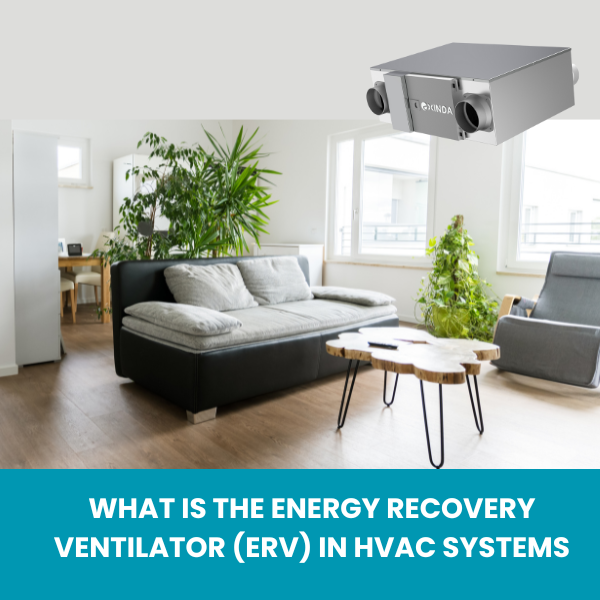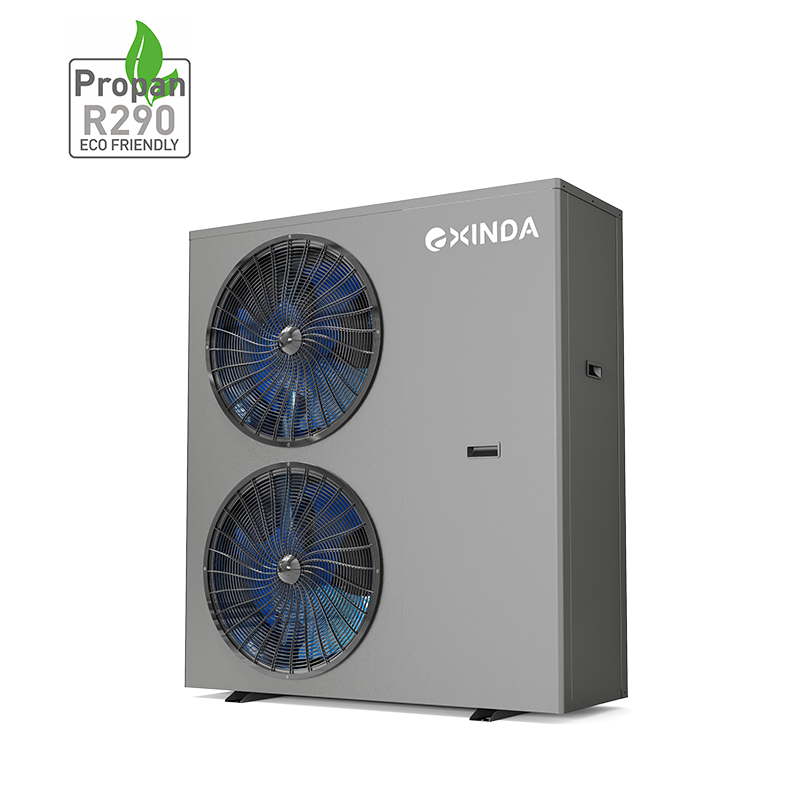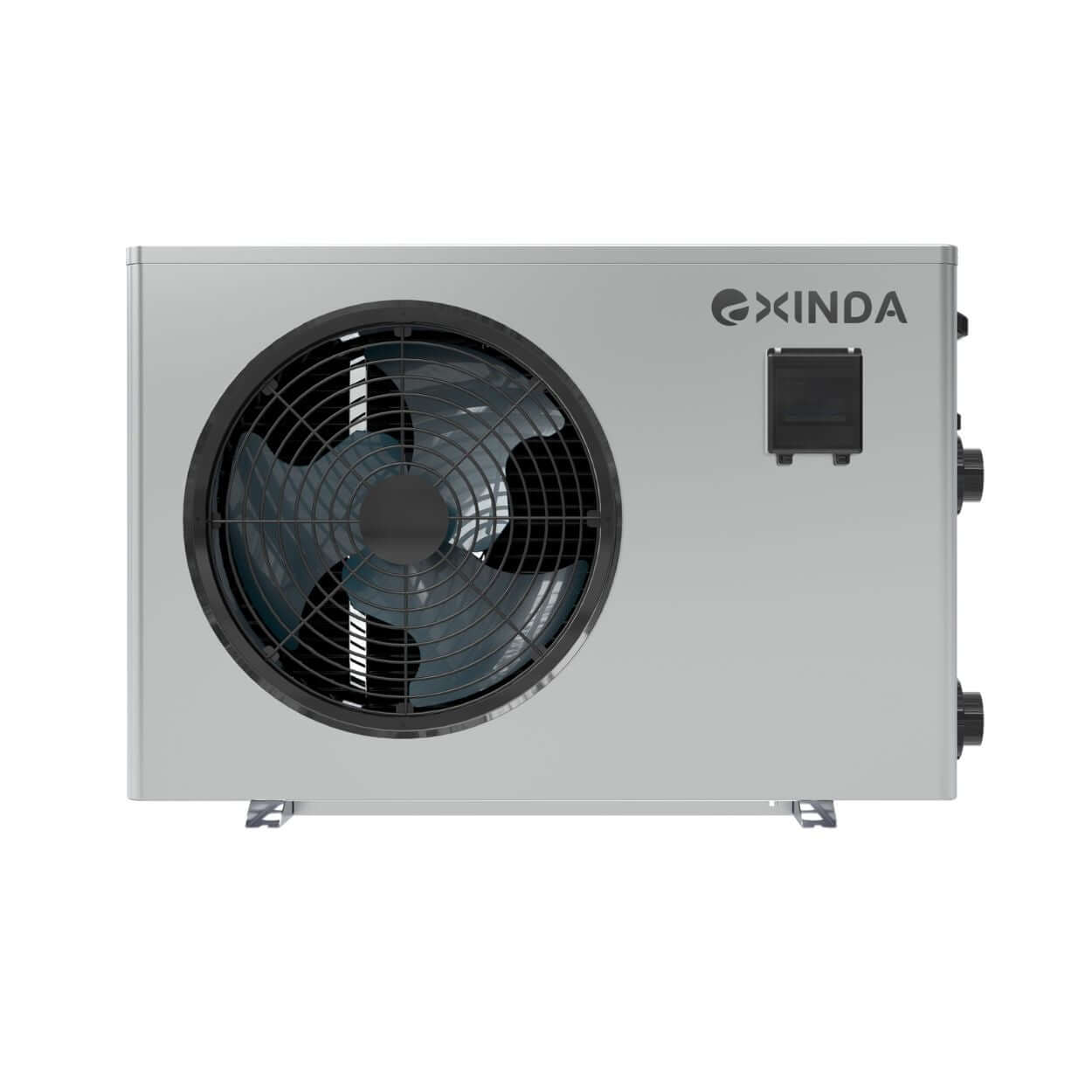
What is the HVAC and ERV?
HVAC

HVAC, an acronym for Heating, Ventilation, and Air Conditioning, refers to a system designed to regulate indoor environments, ensuring comfort and air quality in residential and commercial spaces. The primary functions of an HVAC system include:
- Heating: Provides indoor heating to maintain a warm and comfortable environment. Common heating devices include furnaces and heat pumps.
- Ventilation: Ensures air circulation, removing pollutants, excess moisture, and odors to maintain air quality.
- Air Conditioning: Reduces indoor temperature through cooling and dehumidification, offering a cooler environment.
Energy Recovery Ventilator (ERV)

Energy Recovery Ventilator (ERV)is an efficient ventilation device designed to improve indoor air quality while minimizing energy loss. By recovering energy during the exchange of indoor and outdoor air, ERV significantly reduces energy consumption for heating, cooling, and humidity control.
The core component of an Energy Recovery Ventilator (ERV) system is the energy recovery wheel, which exchanges energy between exhaust air (already used indoor air) and fresh air (outdoor air). This wheel rotates between the two airflows, effectively capturing heat (sensible heat) and moisture (latent heat) from one airflow and transferring it to the other. The specific processes include:
Sensible Heat Exchange: When the indoor exhaust air is warmer (or cooler) than the incoming fresh air, the Energy Recovery Ventilator (ERV) wheel absorbs heat (or cold) from the exhaust air and transfers it to the fresh air entering the building, preheating (or precooling) the fresh air.
Latent Heat Exchange: Energy Recovery Ventilator (ERV) also exchanges moisture in the air, meaning it can regulate humidity and temperature. In environments with high humidity, ERV removes moisture from the exhaust air and transfers it to the relatively dry fresh air, achieving humidification or dehumidification depending on the season and indoor/outdoor relative humidity conditions.

For example:
In a large office building during winter, when outdoor temperatures are very low and indoor heat is generated due to numerous occupants and electronic devices, continuous introduction of fresh cold air and simultaneous expulsion of warm indoor air is necessary to ensure indoor air quality.
Imagine an Energy Recovery Ventilator (ERV) device with an energy recovery wheel that slowly rotates between expelling warm indoor air and introducing cold outdoor air. The result is that the outdoor cold air is preheated before entering the building, maintaining a comfortable indoor temperature while also improving indoor air quality, and a portion of the heat from the indoor air is recovered before being expelled, enhancing energy efficiency.
Which Part of HVAC Requires ERV?
The fundamental principle of HVAC systems relies on thermodynamics and fluid mechanics, involving heating, cooling, humidification, dehumidification, and filtration to ensure precise control of indoor environments. The Energy Recovery Ventilator (ERV) belongs to the ventilation part of HVAC systems, primarily responsible for ensuring indoor air circulation, exhausting stale air, and introducing fresh outdoor air to prevent air stagnation and bacterial growth.
The Importance of ERV
Advantages of ERV
- Higher Energy Efficiency: ERV utilizes energy from exhaust air to preheat or precool incoming fresh air, reducing the energy required for heating or cooling new air. This energy recovery process can save a significant amount of energy and reduce energy costs.
- Improved Indoor Air Quality: ERV filters pollutants, humidity, and harmful gases from the air while maintaining proper ventilation, thereby improving indoor air quality. In contrast, traditional air conditioning systems may only recirculate indoor air, leading to a decline in indoor air quality.
- Maintained Indoor Comfort: ERV can reduce heat loss or gain during significant indoor-outdoor temperature differences, helping to maintain comfortable temperature and humidity levels indoors. This contributes to creating a more comfortable living environment, especially in regions with large seasonal temperature variations.
- Reduced Condensation and Mold Issues: By exchanging moisture between the exhaust and incoming air, ERV helps reduce condensation and mold formation. This is crucial for maintaining a dry and clean indoor environment, helping to prevent mold and mildew problems.
- Environmental Sustainability: By reducing energy demand, ERV has a smaller environmental footprint. Additionally, by improving indoor air quality, ERV also contributes to enhancing people's health and quality of life, thereby promoting sustainability to a greater extent.
ERV Reduces HVAC Energy Consumption
- Reduced Heating Demand: In cold seasons, ERV systems can recover heat from exhaust air to preheat incoming cold air. This heat recovery reduces the amount of heat generated by the heating system, thereby reducing energy consumption.
- Reduced Cooling Demand: In hot seasons, ERV can recover coolness from incoming hot air and transfer it to the exhaust air. This not only reduces the impact of hot outdoor air on indoor temperature but also reduces the cooling load on the air conditioning system, thereby reducing energy consumption.
- Reduced Humidity Control Energy Consumption: ERV regulates the humidity of fresh air by recovering moisture from exhaust air, which is particularly effective in humid, hot, or cold, dry environments. In humid conditions, ERV helps with dehumidification, reducing the workload of air conditioning dehumidification. In cold, dry seasons, ERV can transfer moisture from exhaust air to fresh air, reducing the workload of humidifiers. This humidity control not only improves comfort but also reduces energy consumption during humidification and dehumidification processes.
- Optimized Ventilation Efficiency: By effectively managing the supply of fresh air, ERV systems reduce excessive ventilation, meaning fresh air is adjusted based on actual indoor air quality needs. This optimized ventilation strategy reduces energy waste from unnecessary excessive ventilation.
About Exinda

At Exinda, we specialize in offering comprehensive HVAC system solutions. Our product line includes heat and energy recovery ventilators (HRV/ERV), heat pumps, heaters, and other key equipment, all customizable to meet specific client needs. We ensure our clients enjoy optimized indoor comfort and energy efficiency by providing highly compatible equipment and tailored services.
For more interest in our offerings, please visit our website at www.exinda.cn for more details.
The content on this website is for informational and educational purposes only.







